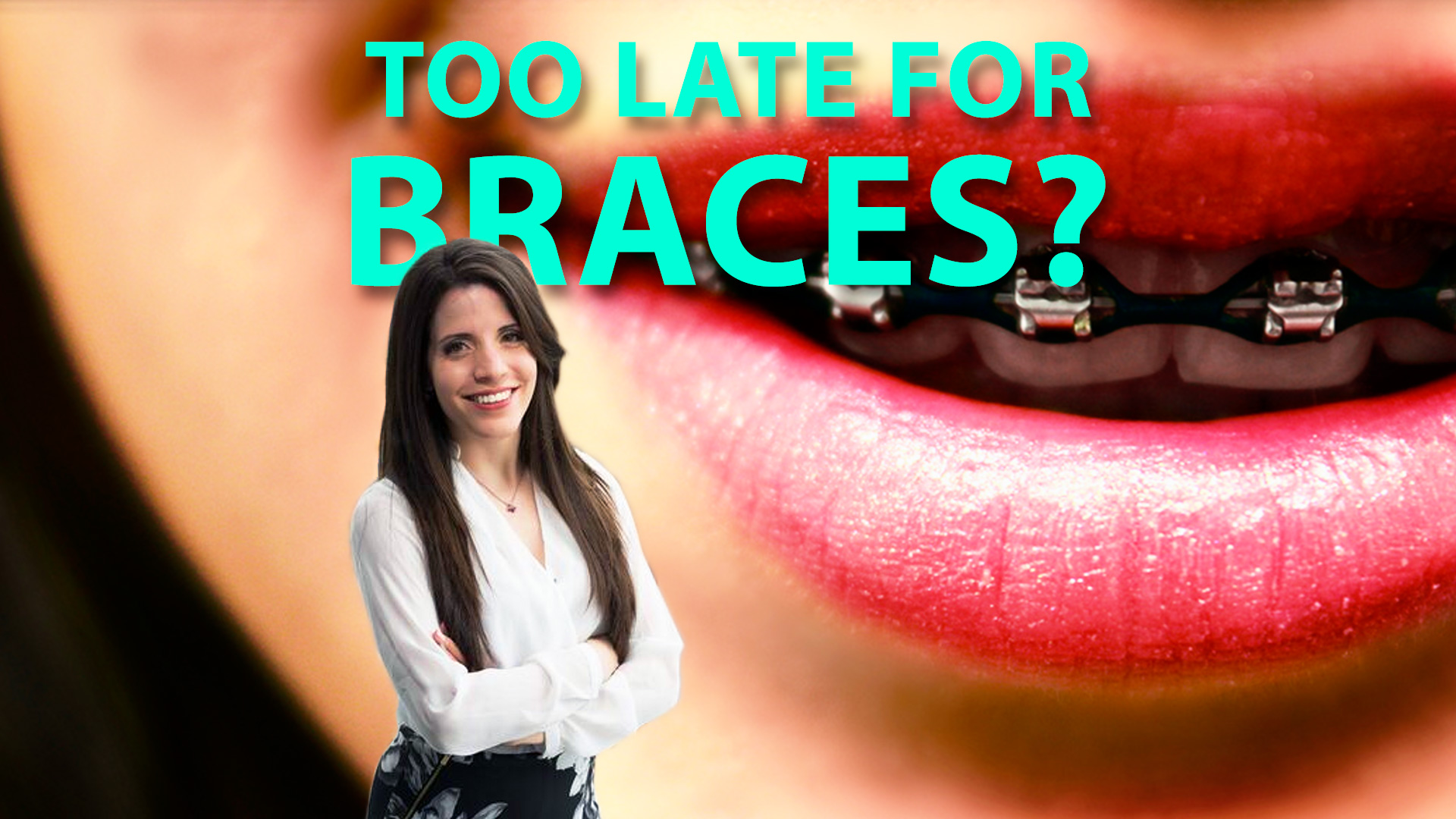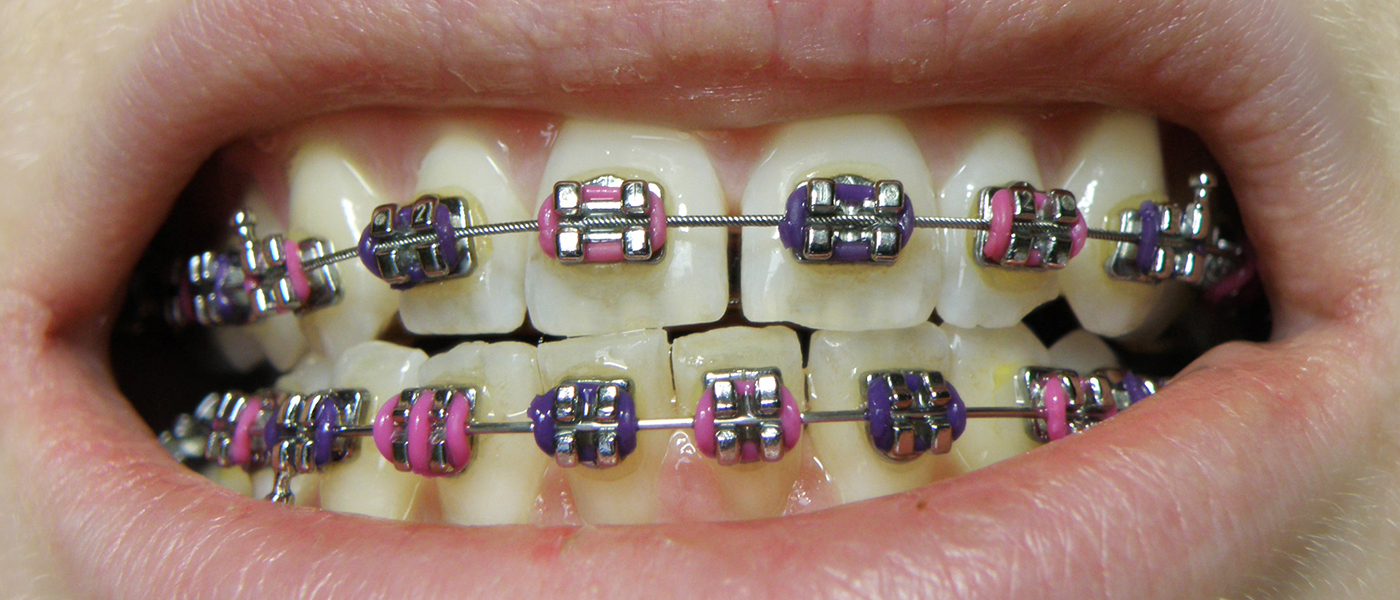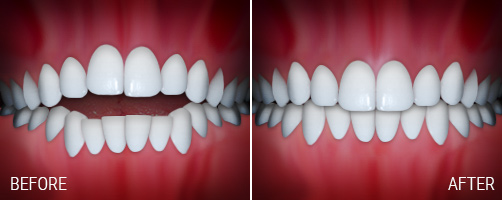When Is It Too Late For Braces?

Is it at 15? Or 20? How about 40?
For many cultures, braces are a symbol for "coming of age" for children. Movies and TV Shows certainly portray braces as a thing of adolescence. So you might think that braces are just for kids.
Braces are one of the most popular tools used by Orthodontists and Dentists to help straighten teeth and fix a bad bite, also known as Malocclusion. Bad bites present in many different forms. For instance, teeth that stick out too far (overjet), teeth that overlap too much (deep bite), front teeth that don't close together; leaving a gap (open bite), crooked teeth, spacing between teeth and unfavorable overlapping of teeth (crossbites).
So you are wondering, can these problems be fixed? And is there an age where braces are no longer feasible.

The truth of the matter is that it all depends…
In this article I will first highlight that the position and orientation of your teeth is changing throughout your life as your body grows. Therefore, any treatment planning for braces should account for changing growth of the individual. Next, the underlying cause of the bad bite or the crooked teeth must be addressed. For example, if the underlying issue is a bad habit like thumb-sucking, then resolving this problem is a priority during treatment. Most importantly, braces are a tool that does not have a specific age limit. If planned and executed well, adults, like kids, can have very successful results through the use of braces.
Lastly, the benefits of braces are many including esthetics, self-confidence and better oral hygiene. I want to touch on one of the benefits that I believe has a huge impact on our day-to-day which is speech improvement. Your teeth play a huge role in how you speak and articulate words and I want to touch on this subject before the end of the article.
Changing Growth

Children and adolescents are known for getting braces largely due to the fact that correcting bone is much easier in children and teenagers during peak growth. This is because not all malocclusion is the result of teeth being in an unfavourable position. Often times the jaws are misaligned leading to many of the "bad bites". Changing the shape and size of the jaw during peak growth (children/teenager) with braces and other adjuncts including various retainers and appliances including the oh-so-famous headgear is very effective. After growth has slowed (adults) changing the size and shape of the jaw requires surgery which is known as orthognathic surgery.
Habit Reversal
Other objectives of treatment by an orthodontist may include reversing the effects of a habit. Habits including thumb sucking, pacifier use, lip, nail and pen biting can affect the way the teeth grow in and how the jaws grow.
Thumb sucking for example, often pushes the top teeth forward so that they may stick out and appear as if the top and bottom front teeth don't meet together (ie open bite) and it may cause the upper jaw to change its shape. If habits like this are not broken by the time children start getting their adult teeth the effects can be permanent.
 Image from: http://fronthealthpost.com/dental-open-bite-and-how-to-fix-it
Image from: http://fronthealthpost.com/dental-open-bite-and-how-to-fix-it
Orthodontics and Adults
What about in adults who have completed their growth? Many adults who seek orthodontic treatment have either never had braces or had braces but their teeth have relapsed after treatment.

Many adults tend to favor clear aligners such as Invisalign and clear braces due to their esthetics versus traditional braces. These alternatives make braces more appealing to adults. Most importantly, no matter the age, teeth can be moved. The difference in treating adults compared to children/adolescents is the inability to change the growth of the jaws in an adult. If treatment does require changing the position of the jaws to achieve the best orthodontic and esthetic result, surgery is the only method. Another challenge encountered when treating adults is moving teeth in the presence of gum disease. Teeth move slower with gum disease, and there is a higher chance of faster and more bone loss. Any orthodontic treatment is often not suitable for patients with gum disease as the state of the teeth, gums and bone can worsen. Patients with gum disease or at risk of it require special management with their general dentist prior to braces. Once controlled, treatment with braces or clear aligners can take place. Orthodontic treatment and braces continue to be used often in the younger population and is rapidly growing in demand with adults in their 30s, 40s, 50s and beyond.
Speech improvement
Braces have many benefits but one incredible improvement is often in speech. Sounds made when speaking involve a combination of movement from the lips and tongue which contact the teeth. Improving the position and orientation of teeth with braces can drastically improve articulation of words and sounds. Many businessmen, leaders and public speakers benefit greatly from this type of intervention.

To summarize, braces are an extraordinary tool that can help you transform your smile. Adults and kids are both eligible for braces. There are caveats such as evaluating growth stage, habits and preferences such as clear braces that should be considered during treatment planning. However, with the right plan and a thoughtful execution, rate of success with braces is very high.
What do you think? Have your thought about braces for your kids? For yourself?
Comment below with any questions and/or experiences you have had with braces.








